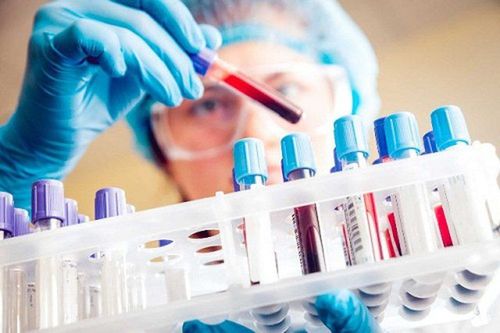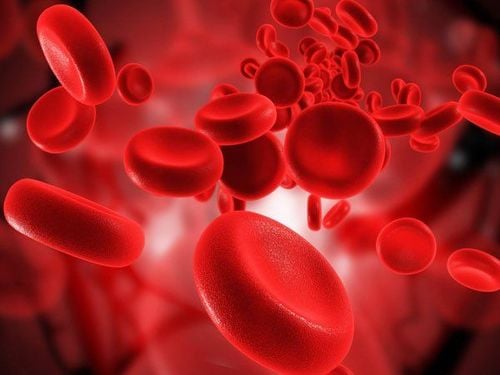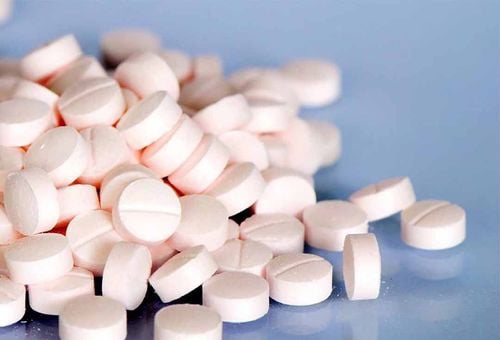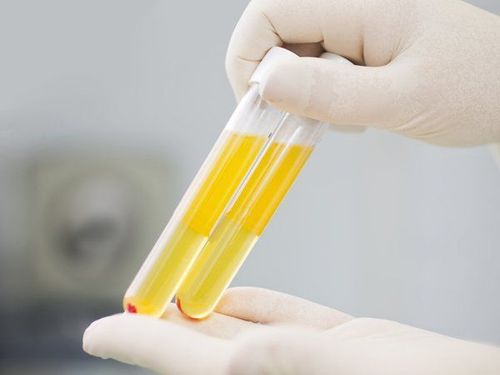This is an automatically translated article.
To ensure and maintain the full functions of the body, the amount of iron in the blood usually fluctuates within a certain range. High or low iron levels in the blood can be a sign of a medical condition. The results of the serum iron test help doctors make an accurate diagnosis of your body's current condition.
1. The role of iron in the body
Iron is one of the trace elements that play an important role in most of the body's organs such as hemoglobin (Hb), myoglobin and some enzymes. In the metabolic mechanisms, iron participates in oxygen transport, DNA synthesis, electron transport...For healthy people, 90-95% of iron in the body is reused from iron sources. due to the destruction and release of old red blood cells; Iron is also excreted about 5 - 10% (1 - 2mg) through urine, sweat, and feces. To rebalance the amount of iron needed, the body receives more iron from food, iron absorption takes place mainly in the stomach, duodenum and first part of the jejunum.
2. Indications for performing a serum iron test
When performing some tests such as total blood analysis, hemoglobin has abnormal results Or suspect you have anemia, iron deficiency through some symptoms such as pale skin, pale mucous membranes, pale tongue, smooth due to loss or wear of tongue spines, hair, hair, dry brittle nails. Patients often feel tired, dizzy when changing positions, chest tightness, reduced ability to work physically and mentally... the doctor can order a serum iron test.

Thiếu máu, thiếu sắt khiến bạn thường xuyên cảm thấy mệt mỏi và chóng mặt
3. Notes when performing serum iron test.
To perform the test, you need to draw blood. The site of blood collection is usually the dorsal or arm vein. The blood sample is then sent to a laboratory for analysis.
Before the test, you also need to fast (do not eat or drink, can drink water) for about 12 hours. You should perform the test in the morning, before 10 am, because this is the time when serum iron reaches the highest concentration.
4. What disease does the serum iron test diagnose?
Serum testing to comprehensively assess the amount of iron in the blood. Transferrin is a protein in the blood that helps transport iron to organs that need iron in the body such as bone marrow, muscle tissue. The test shows how much iron is bound to the protein transferrin, so the doctor can tell if there is an iron deficiency or an excess of iron in the blood.4.1 Low serum iron concentration The most common cause of decreased serum iron is
Iron deficiency anemia . Dietary iron deficiency (malnutrition). Causes of reduced absorption. Blood loss through: Gastrointestinal tract, obstetrics and gynecology, urinary tract. Increased iron requirements: Growth phase, pregnancy, menstruation (females lose 3-8 mg of iron in each menstrual period), postoperative conditions, inflammatory syndromes (such as rheumatoid arthritis or collagen disease) active stage), acute infection and especially chronic infection, cancer and neoplastic pathology. Other causes: extensive burns, uremia, hypothyroidism, nephrotic syndrome (caused by the loss of iron-carrying proteins in the urine).

Mang thai là một trong những nguyên nhân khiến nồng độ sắt huyết thanh thấp
Hemolytic anemia: A condition in which red blood cells burst due to abnormalities in red blood cell life. Liver diseases: liver cell death, hepatitis. Iron poisoning: when you consume too much iron-rich foods. Serum iron test results will be affected in the following cases:
Artificially elevated serum iron levels may occur due to the patient taking vitamin B12 within the previous 48 hours. Taking iron dextran, patients taking iron-containing drugs (including multivitamins) may experience a temporary increase in serum iron. Patients taking oral contraceptives will have increased serum iron levels and/or total iron binding capacity. Spurious reductions in serum iron may occur when specimens are turbid due to hyperlipidemia or inflammatory conditions. Drugs that can increase serum iron levels are: cefotaxime, chloramphenicol, estrogens, ferrous sulfate, methimazole, methotrexate. Drugs that can decrease serum iron levels are: Allopurinol, aspirin, cholestyramine, adrenal hormones, metformin, pergolide, progestin, risperidone, testosterone. For any questions as well as customers wishing to be tested at Vinmec International General Hospital, you can contact Vinmec Health System nationwide or register online HERE.
MORE:
What is a serum? Application of Serum What is Immune Globulin? The difference between serum and plasma













